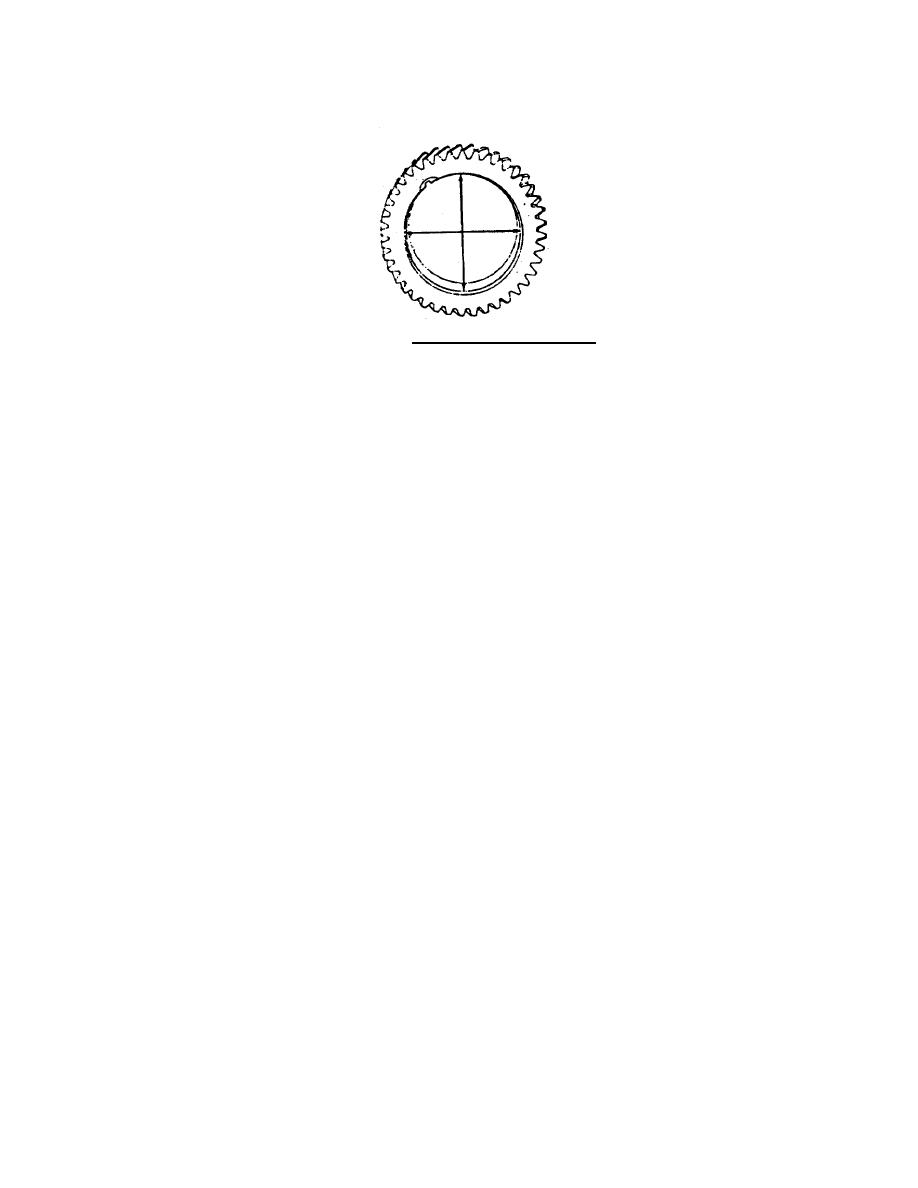
| Tweet |

Custom Search
|
|

|
||
 TM 55-1905-223-24-5
FIGURE 4-46. Measuring Crankshaft Bore.
(7) Replace gear if damaged.
b. Inspect bearing cap, bearings and shells:
(1) Use a soft bristle brush and solvent to clean the parts.
(2) Dry with compressed air.
(3) Visually inspect the main cap and capscrews for damage.
(4) Visually inspect the bearing shells and the thrust bearings for nicks,
scratches or damage.
NOTE
If the main bearings are damaged, inspect the crankshaft main
bearing journals.
(5) Use an outside diameter ball tipped micrometer to measure the main bearing shell thickness. It
should be between 0.1215 inches (3.086 mm) and 0.1238 inches (3.145 mm).
(6) Discard a main bearing shell if its thickness is below the minimum specification.
NOTE
Bearing shells are available for crankshafts which are 0.010
inch (0.25 mm), 0.020 inch (0.51 mm), 0.030 inch (0.76 mm),
or 0.040 inch (1.02 mm) undersize. Crankshafts which are
ground undersize in the connecting rod and main bearing
journals are marked on the front counter weight (FIGURE 4-
47) . If the crankshaft is marked, check the bearing shell to
make sure the correct size bearing is used.
4-88
|
||
 |
||